The Sultanhamet – Nothing Else Like It
In the last post from this Adventures Abroad tour of western Turkey we met our guide and driver and enjoyed an introduction to Istanbul by way of a drive around the Golden Horn. In this post our guide Yasemin Reis will take us on a walking tour of the Sultanhamet district of the city. With Hagia Sophia, the Blue Mosque, the Hippodrome and much more this is without question one of the most important tourist destinations on the planet. Join as us and you will pretty well be awestruck by the architectural beauty and magnificence of the Sultanhamet.
The Sultanhamet
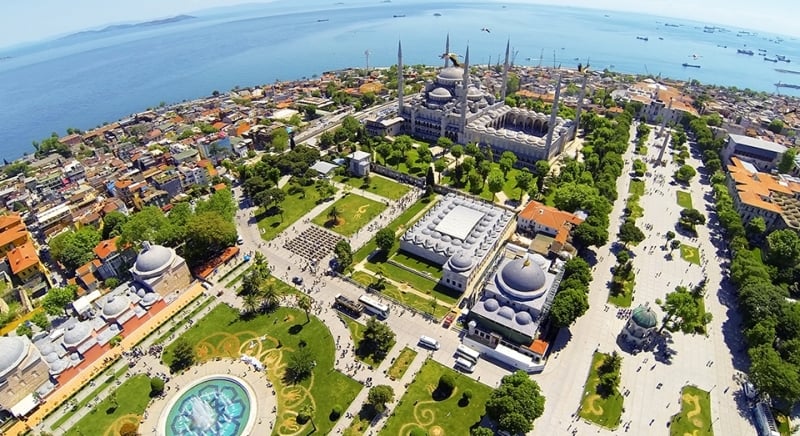
This is an aerial photograph of Sultanhamet Square showing the Hippodrome on the right, the Blue Mosque at the back and the fountain and gardens that lie midway between the Blue Mosque and Hagia Sofia. They are all part of the UNESCO World Heritage Site Historic Areas of Istanbul. Before Covid the Sultanhamet would be absolutely jam packed with tourist buses and long lineups to get into the Blue Mosque and Hagia Sofia. Today as our group makes its way the short distance from the Sura Hagia Sophia Hotel to the Sultanhamet, I can see that there are only a fraction of the number of visitors as in previous visits. It is still busy as the area is also very popular with Turkish tourists and Istanbulites, but it’s nowhere near the insanity that I have witnessed in the past.
Our first stop will be the Blue Mosque, but I have to mention that if you stand by the fountain in the picture above and take in the 360° panorama for the first time, it is a sight you will never forget. There in all its splendour is the Blue Mosque.
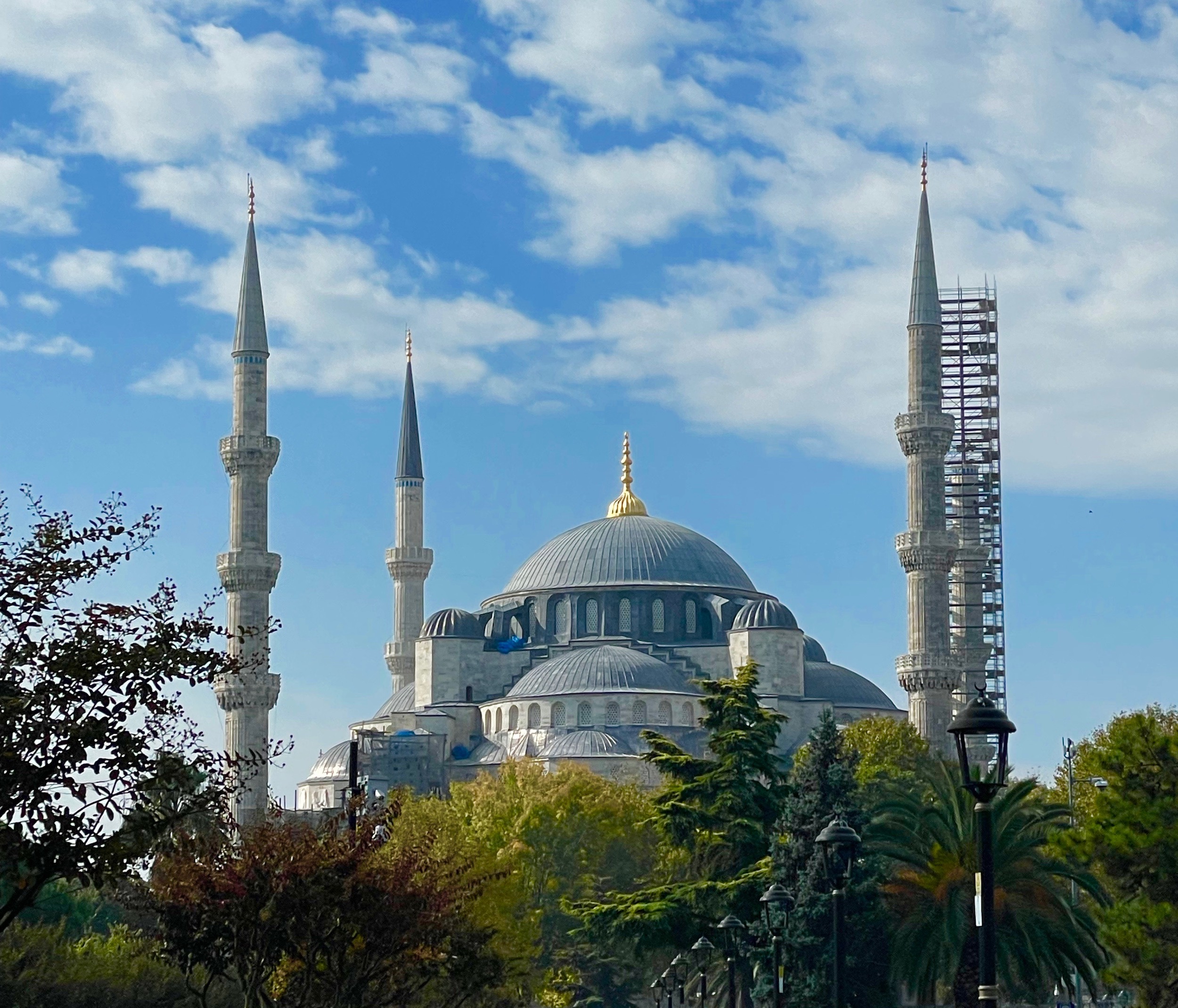
And turning 180° you see the grandeur of Hagia Sophia. I guarantee you that this is a sight you will never grow tired of.
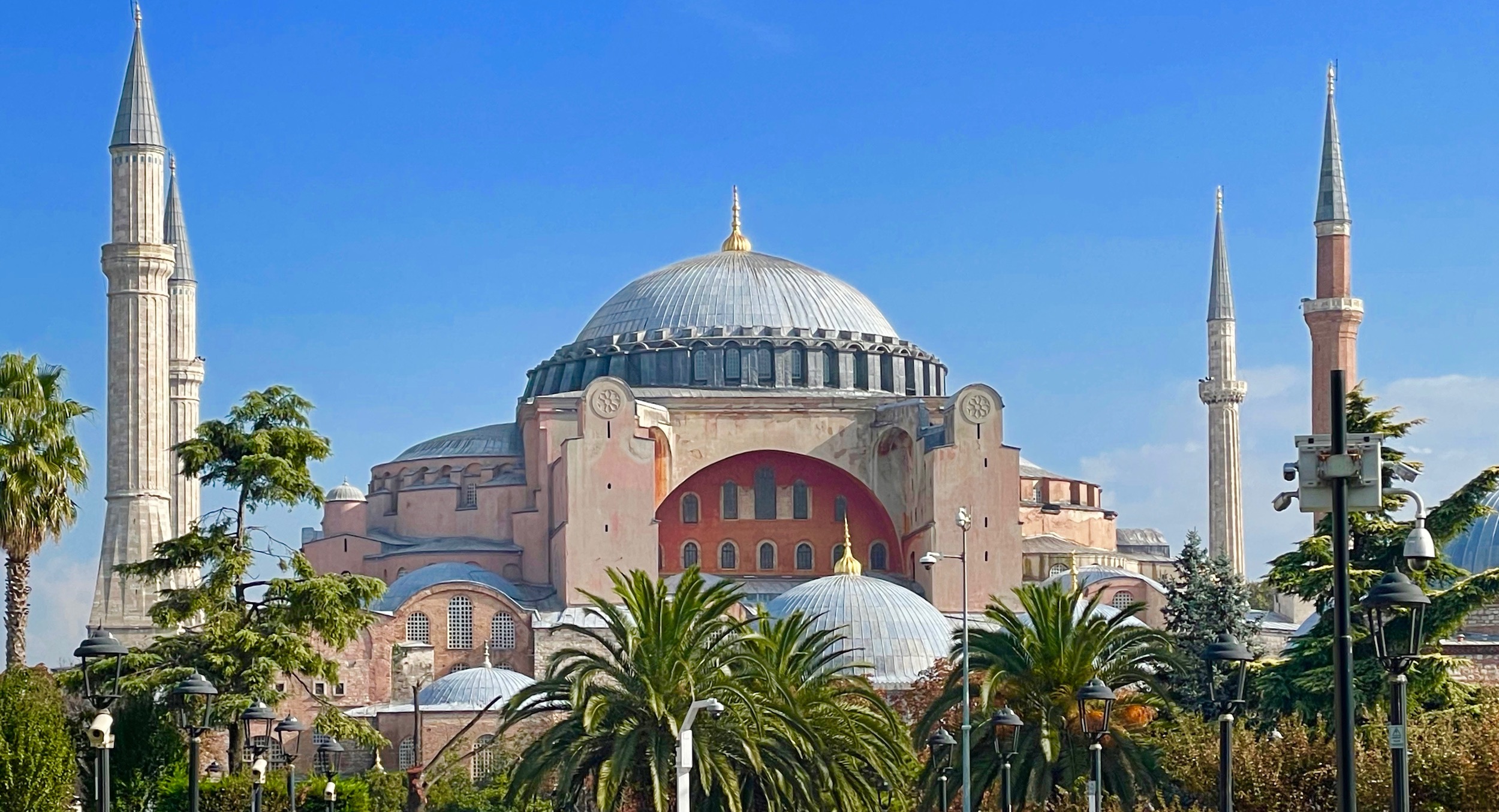
The Blue Mosque
You can be excused for thinking that the Blue Mosque gets its name from the distinct bluish hue of the roofs of the five domes, but it is actually the Iznik tiles in the interior walls and ceilings that account for the name. The official name is the Sultan Ahmed Mosque as it was built in the early 17th century by Sultan Ahmed I and it was his main claim to fame. Many people, myself included, believe that it is the most beautiful mosque in all of Islam, the ultimate triumph of the classical Ottoman architecture period that was heavily influenced by the design of Hagia Sophia. In the last post we saw the almost equally beautiful Mosque of Suleiman as we crossed the Galata Bridge. It was designed by the greatest of Ottoman architects Mimar Sinan and the Blue Mosque by a pupil of his, Sedefkar Mehmed Agha who is thought to have been an Albanian by birth.
The best thing about the Blue Mosque is undoubtedly the view from the Sultanhamet, but after years of renovation you can now see the famous blue tiles and 200 stained glass windows. It is a great place to start to learn the etiquette of visiting a mosque and what you can expect to see in every one of them. Just as Gothic cathedrals have features that appear in every one of them – transepts, apses, altars and baptistries, so too do mosques.
As the Blue Mosque is an active religious building and not a museum, you can only visit between one of the five daily prayers. Second you must be dressed modestly which means no shorts for either sex and scarfs for women. These are routinely available available free of charge, although in these days of Covid, you’ll want to bring your own. Footwear must be removed and can be stowed in storage spaces or carried. As in visiting any religious institution respect and quietness are expected.
Non-flash photography is permitted.
Oh, and if you actually want to pray you’ll need to make sure you are in the right section to do it.
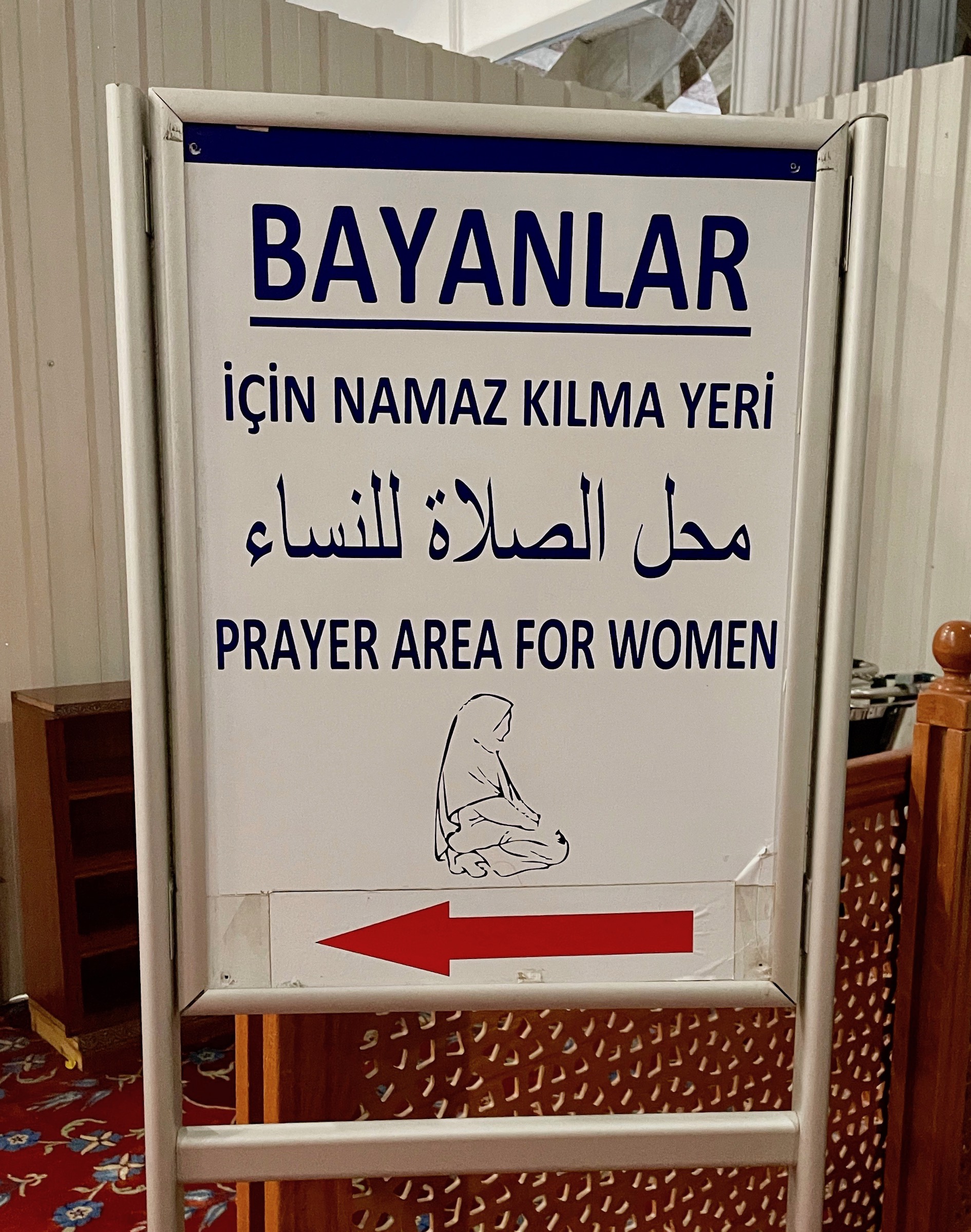
A feature of all classical mosques is the minbar, which is the equivalent of a pulpit, from where the imam (prayer leader) leads the daily prayers.
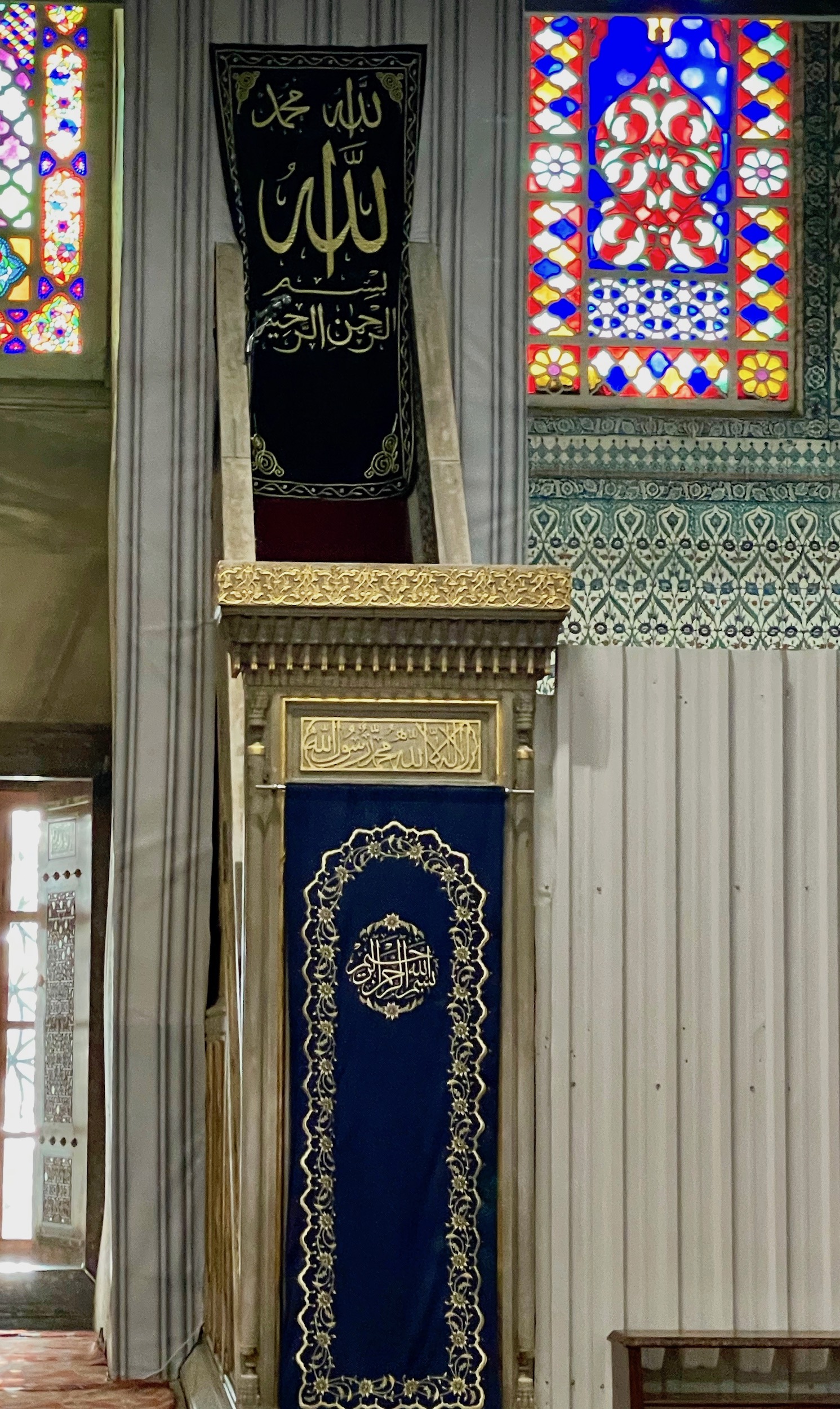
From the Blue Mosque we return to the sunlight to begin our stroll down one of the most famous sections of the Sultanhamet.
The Hippodrome of the Sultanhamet
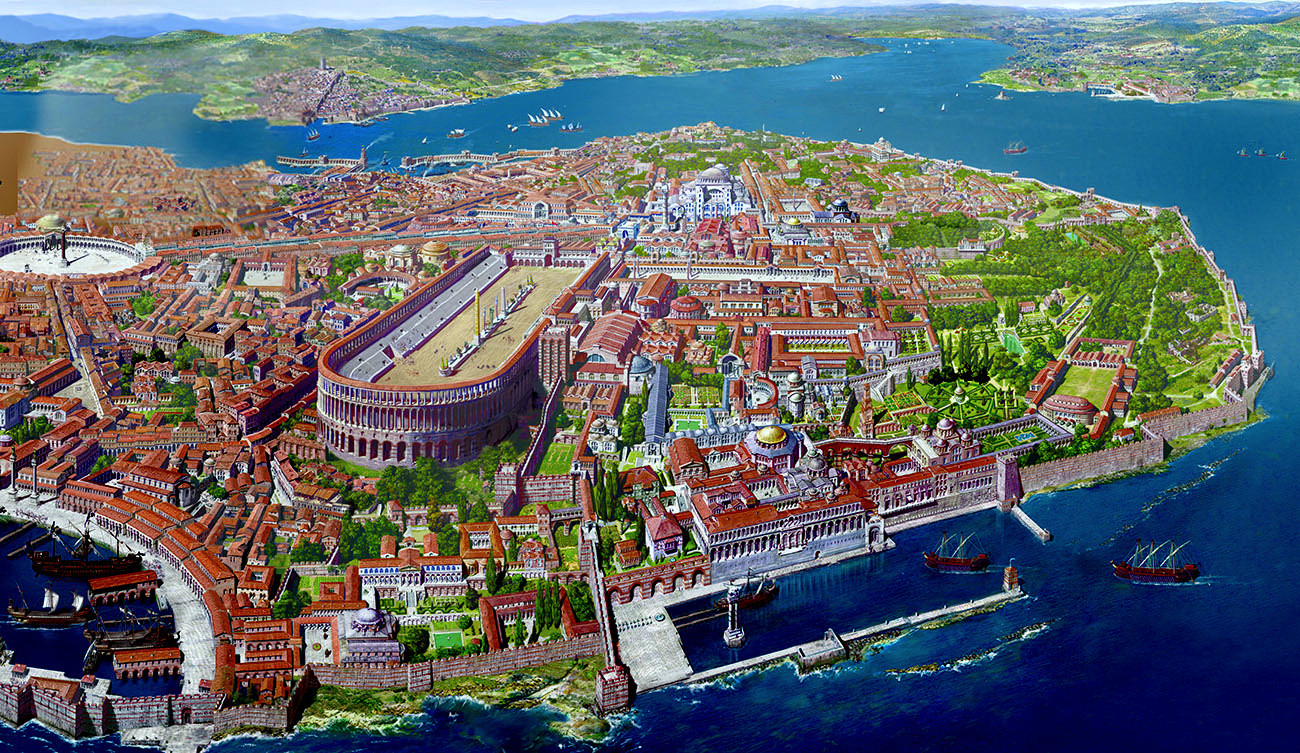
One of the things that makes the Sultanhamet so special a place to visit is that its main components span three empires – the Roman, the Byzantine and the Ottoman. We just visited the principal Ottoman structure, the Blue Mosque and now we turn our attention to the Roman Empire and in particular the Hippodrome and its many monuments. The model above shows just how commanding a piece of architecture the Hippodrome once was for over 900 years.
In the year 330 the emperor Constantine solidified the earlier division of the massive Roman Empire into two halves with the western Roman Empire based in Rome and the eastern Roman Empire in the Greek city of Byzantium, which he renamed Constantinople when he took up residence there. Constantine embarked on a building campaign of monumental structures of which the Hippodrome was by far the largest. Seating anywhere from 30,000 to 100,000 spectators depending on your source, it featured many events over the centuries it stood, but was most noteworthy for its chariot races. Hundreds of years after Rome had been reduced to near rubble they were still having chariot races in the Hippodrome, the last place in the empire that these were documented.
Modelled upon the Circus Maximus in Rome, Constantine wanted to repeat the grandeur of that place by bringing monuments from foreign lands to be erected in the space within the oval tracks and we’ll visit those shortly. Nearly all traces of the Imperial palaces that once stood where the Blue Mosque now stands are long gone, but the shape of the Hippodrome and most of its monuments were still there when the Ottomans conquered the city. Almost by default, the area where the Hippodrome once stood became the most important public space in the newly named city of Istanbul and has remained so until this day. So let’s find out about those monuments that are still standing in the Sultanhamet.
This is a photo of the Obelisk of Theodosius or more properly the Obelisk of Pharaoh Thutmose III who was the one who had it carved and erected at the Temple of Karnak. A few years before this trip I went to Egypt with Adventures Abroad and visited the great Temple of Karnak where many of the great obelisks that are now found in places like London, Paris, New York and most notably Rome were originally erected. There is just something about Egyptian obelisks that have made them very collectable to everyone from Augustus to Napoleon. Of thirty extant obelisks that are on public display only seven are in Egypt.
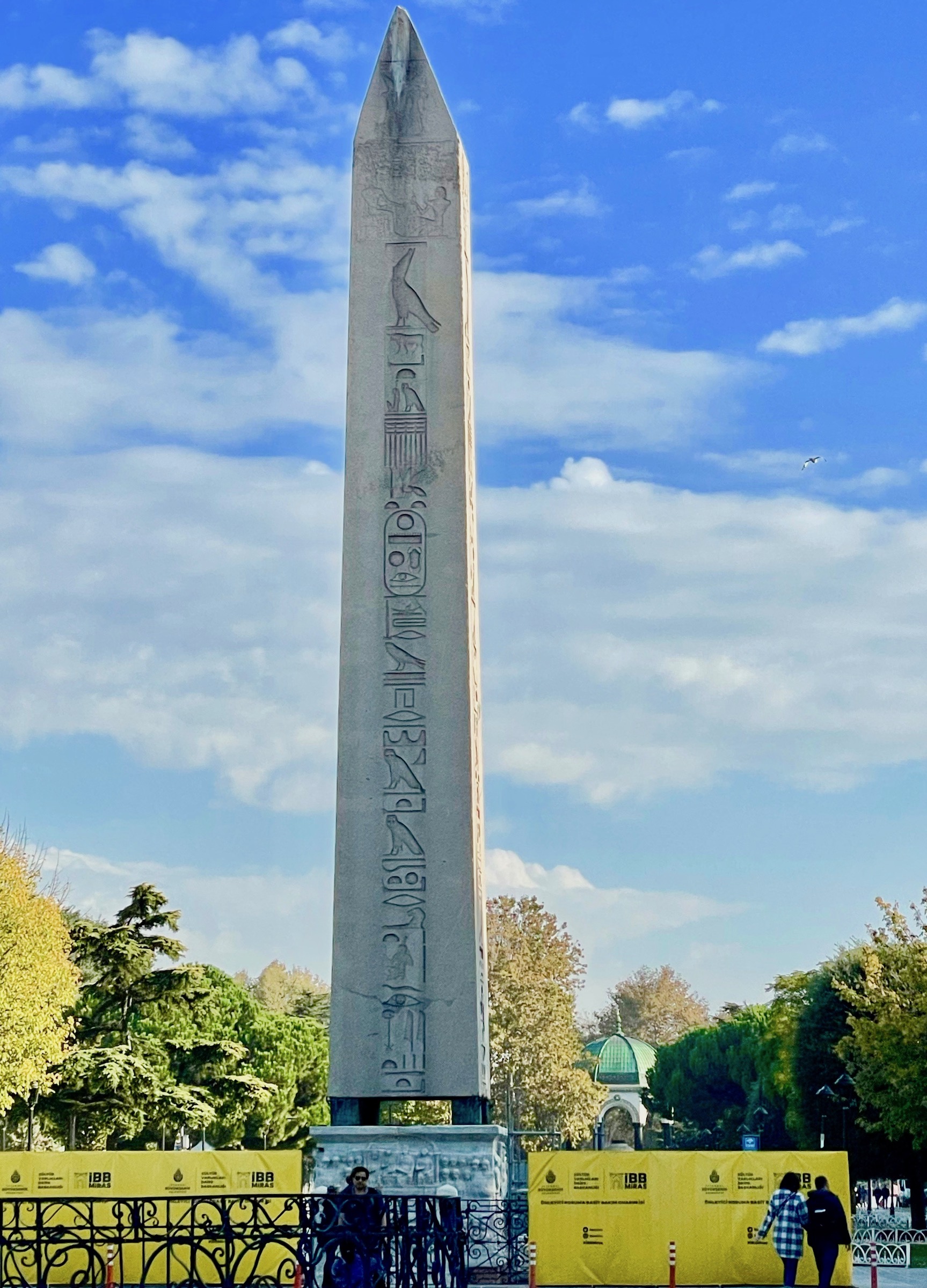
The Obelisk of Theodosius was originally moved to Alexandria by Emperor Constantine II and in 390 AD Emperor Theodosius I had it moved to its current location. Thutmose III was one of the greatest of the Egyptian pharaohs ruling for over 53 years and conquering everyone he could get his hands on. The Egyptian empire was at its largest during his reign and this obelisk commemorates his conquest of the Mitanni which included much of northern Syria, southwest Turkey and parts of Iraq.
The base or pedestal of the obelisk contains a series of bas-reliefs created at the time the obelisk was erected in the Hippodrome. This one depicts the submission of the barbarians to Roman rule.
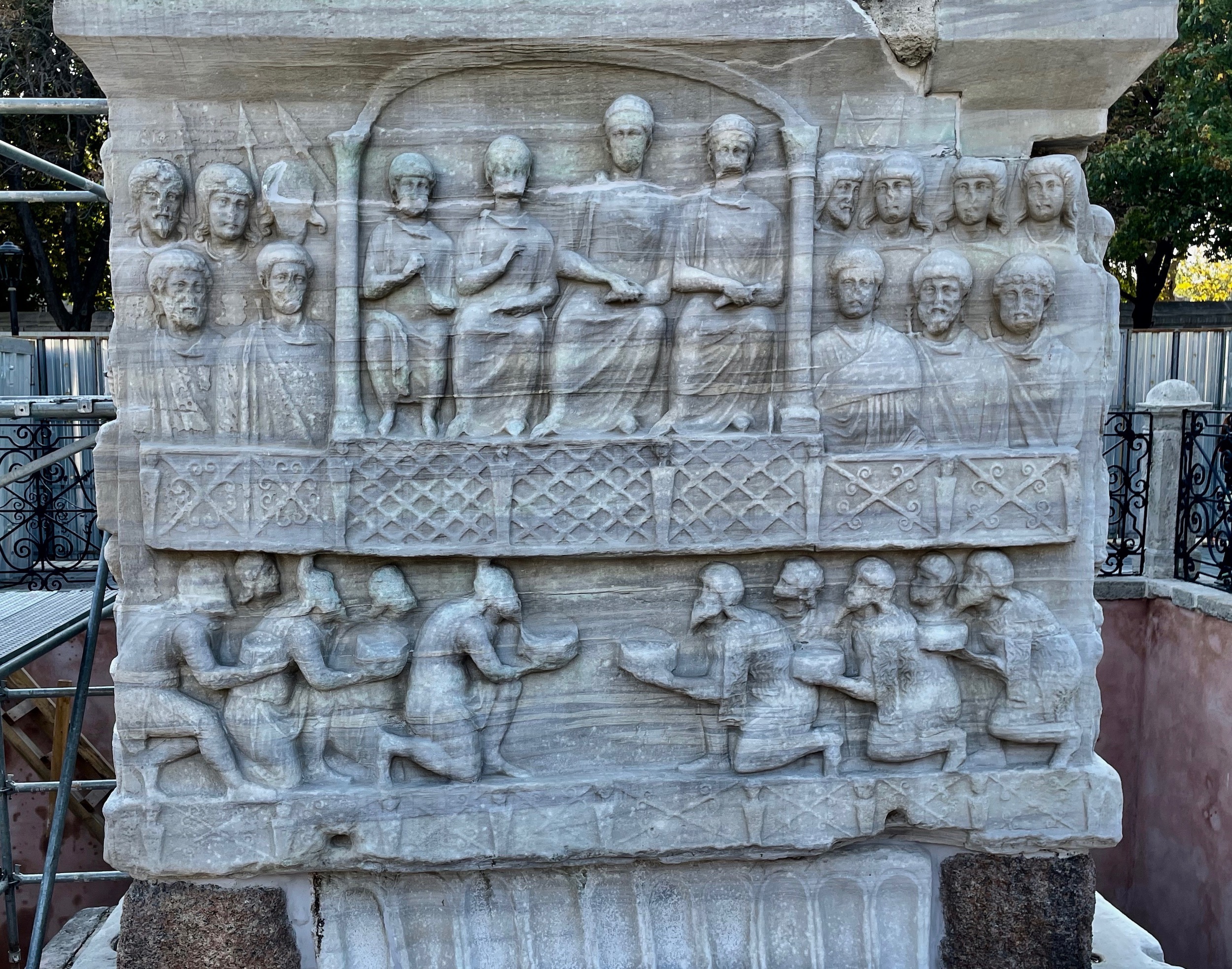
This side depicts Theodosius enthroned with his court. I should note that this information about everything we are seeing in the Sultanhamet was conveyed by Yasemin and I was quickly getting a sense of just how knowledgeable she was about all things related to Turkey. On many trips AA hires local guides that are specialists in the area you might be visiting on a particular day, but with Yasemin this was not necessary. It’s a bit of a cliche, but wherever we went she knew her stuff.
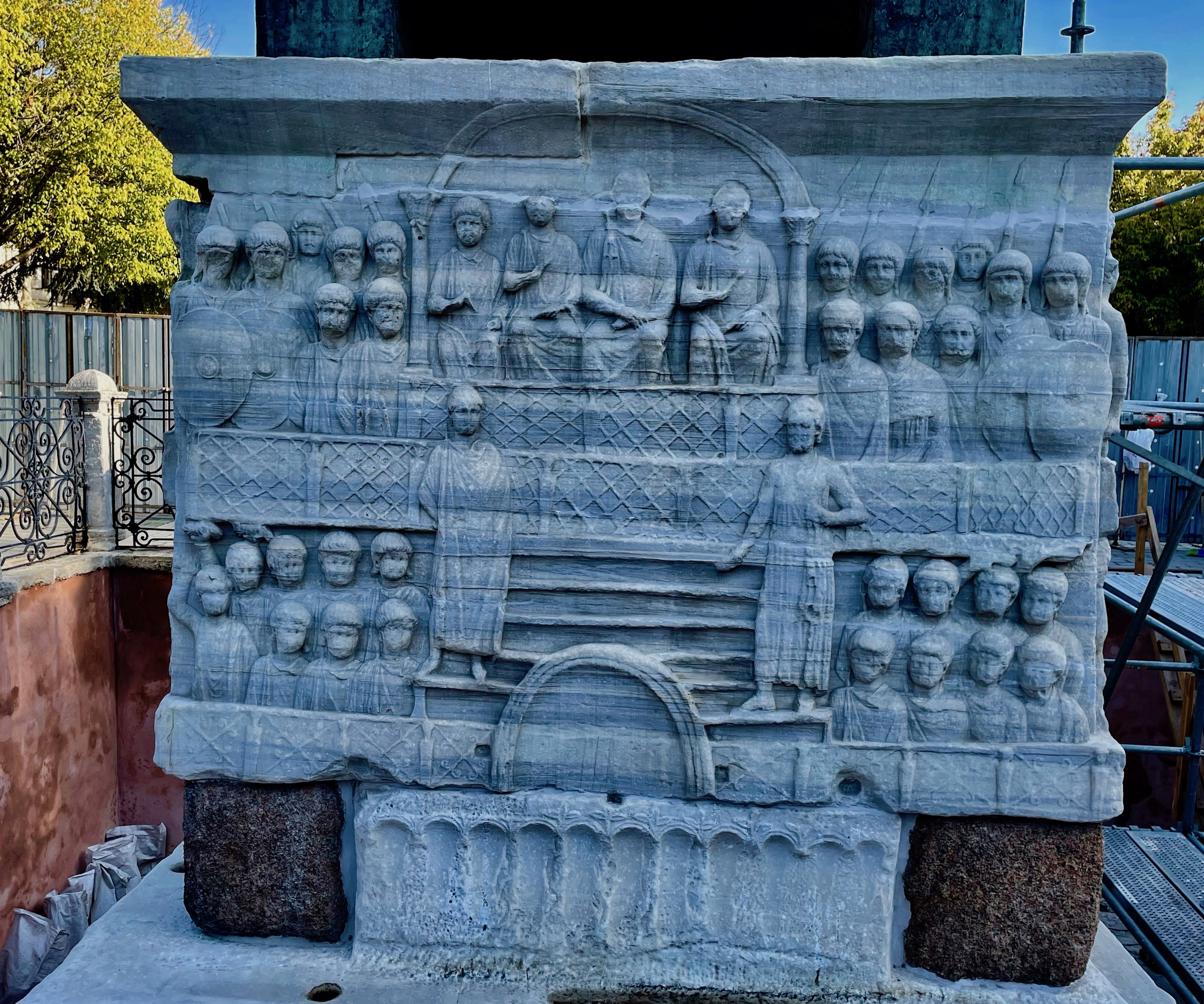
The next object of interest in the Hippodrome is something that is truly unique. This is the Serpent Column of Delphi and it is one of the most famous archaeological artifacts in the world. It was originally erected in Delphi, Greece to commemorate the defeat of the Persians by the Greeks at the Battle of Platea in 479 BC. Writers from Thucydides, Herodotus, Pausanias, Plutarch to Edward Gibbon have all commented upon the significance of this column to visitors to the great Oracle of Apollo at Delphi.
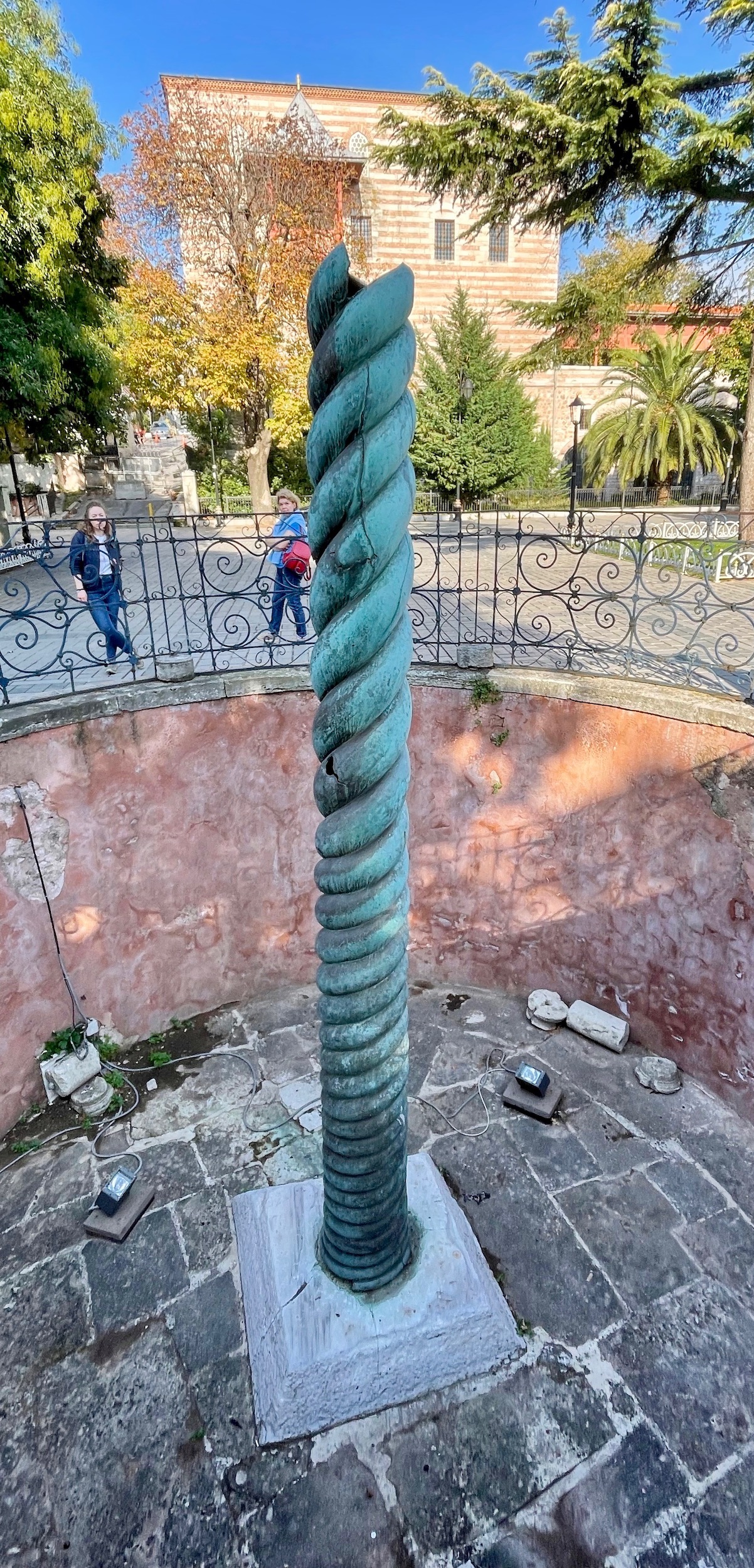
It was of such significance that Constantine had it brought to his new capital city in 324 presumably as a talisman that would help ensure the prosperity of his eastern Roman Empire. Originally it looked like this and had a large cauldron supported by the serpent heads. The cauldron was stolen during the fourth Crusade when the city was sacked by so called ‘Christian’ crusaders, but the heads remained intact until about 1700 when for reasons unknown they were removed. You can still see a portion of one in the Istanbul Archaeological Museum.
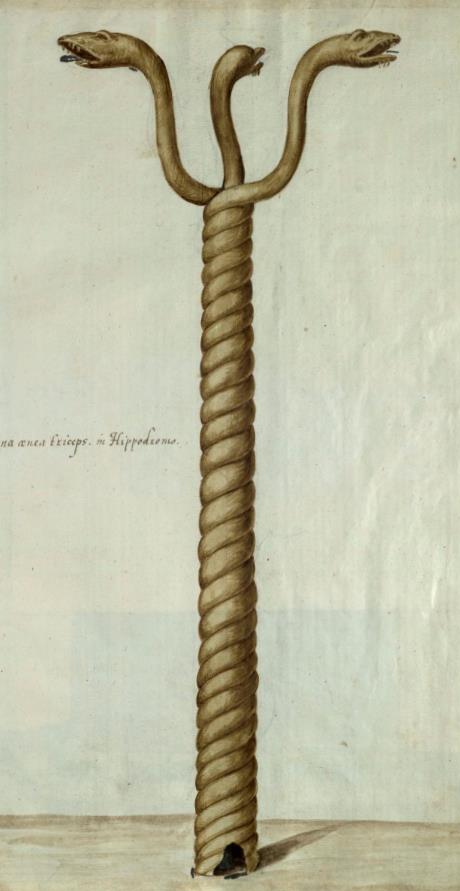
Although it might not much to look at today, the Serpent Column exudes an aura of mystery that has lasted for almost 2,500 years.
A very poor cousin to the Obelisk of Thutmose III is the Walled Obelisk which is the third column to be found within the precinct of the Hippodrome. This was built on site around the same time as Theodosius brought his obelisk from Egypt. Originally it was covered with brass plaques that extolled the virtues of various emperors and apparently glittered very brightly, but these have long been looted and now it sits as the ugly duckling of the Sultanhamet.
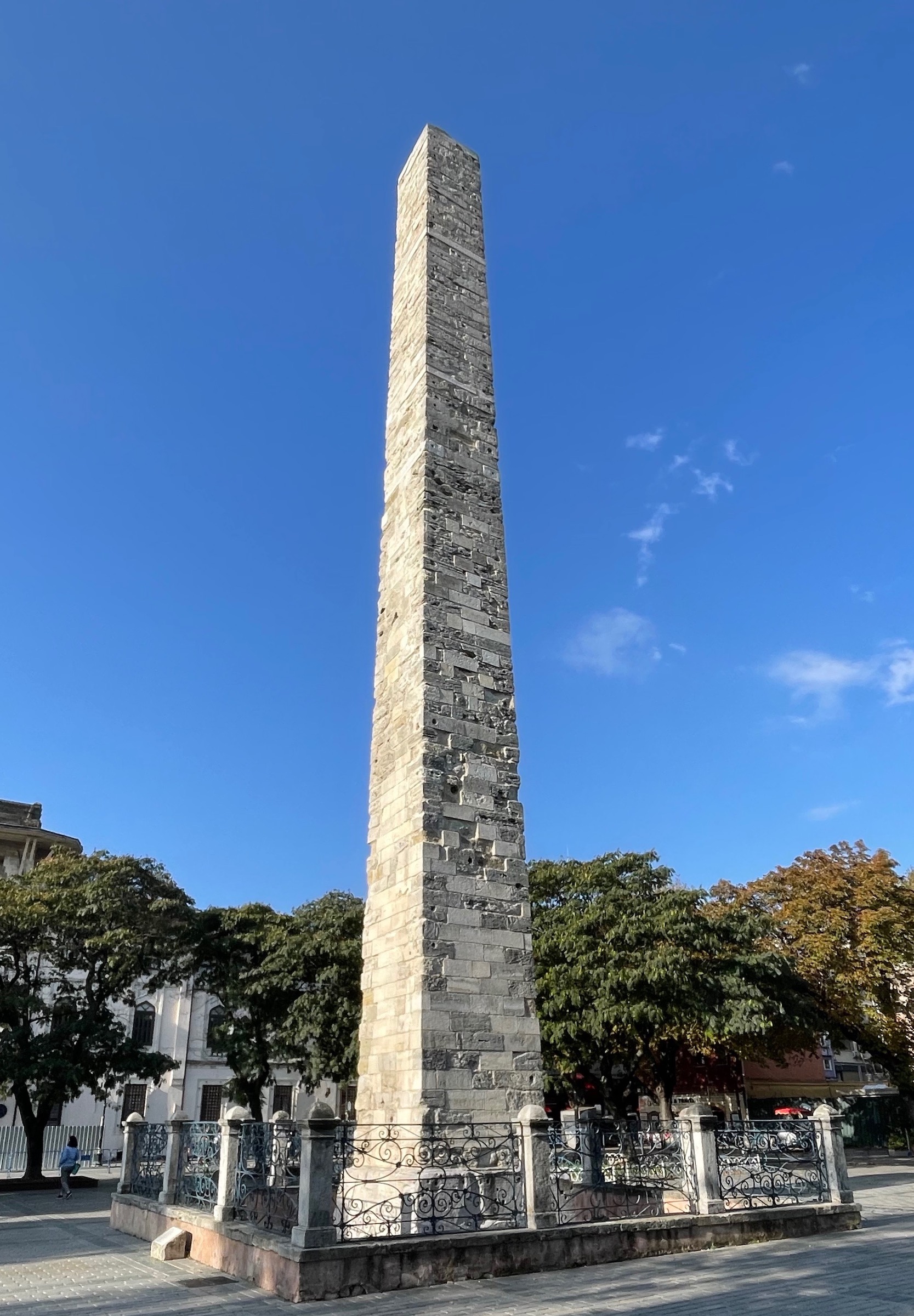
Our next stop in our tour of the Sultanhamet is the German Fountain which is at the northern end of the Hippodrome. It was a gift to the Ottoman Sultan Abdulhamit II by Kaiser Wilhelm of Germany who visited the city three times during his reign. Kaiser Bill was eager to create an alliance with the Ottomans that would benefit Germany in the event that the war he was mongering actual broke out, which of course it did. We will learn more about the consequences of this alliance when we visit Gallipolli.
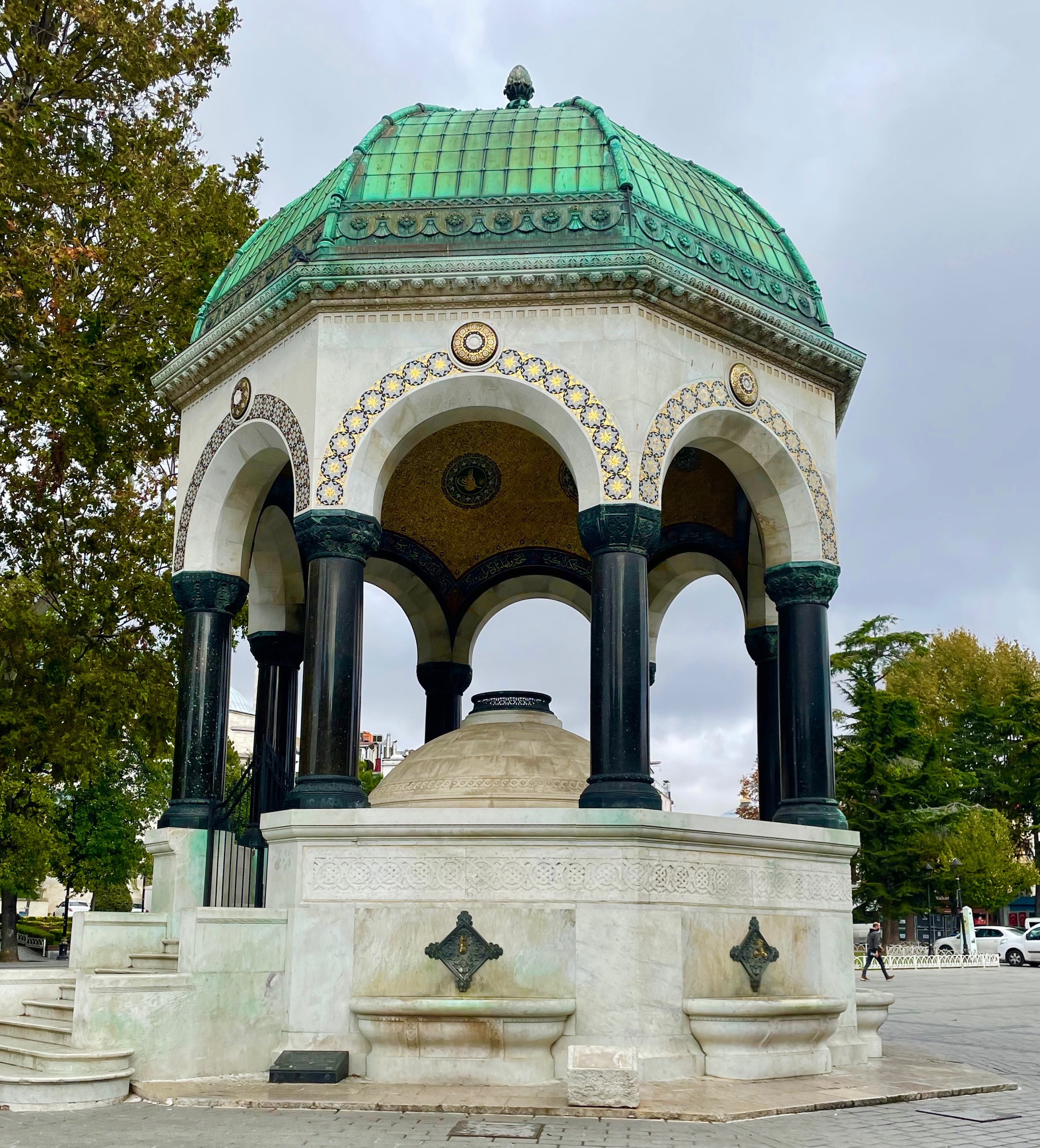
Whatever you might think of Kaiser Wilhelm, he did make a great looking fountain.
By now we have reached the halfway point in the Sultanhamet between the Blue Mosque and Hagia Sophia. Here you will find the Baths of Roxelana which were commissioned by Suleiman the Magnificent in 1556 and designed by his favourite architect Mimar Sinan. Roxelana was Suleiman’s consort and wife and one of the most interesting characters in all of history. Born in Ukraine and raised as a Christian she was captured by Tatar raiders and sold in the slave market of Istanbul, ending up as one of hundreds of women in the sultan’s harem. Against all odds she clawed and intrigued her way to the top and actually got the sultan to marry her, which was a great rarity at the time. Some people thought the only explanation for her success was witchcraft. If you get the chance pick up a copy of Roxelana by Ukrainian author Osyp Nazaruk which is considered the best of many historical novels describing the life of this Ukrainian Odysseus.
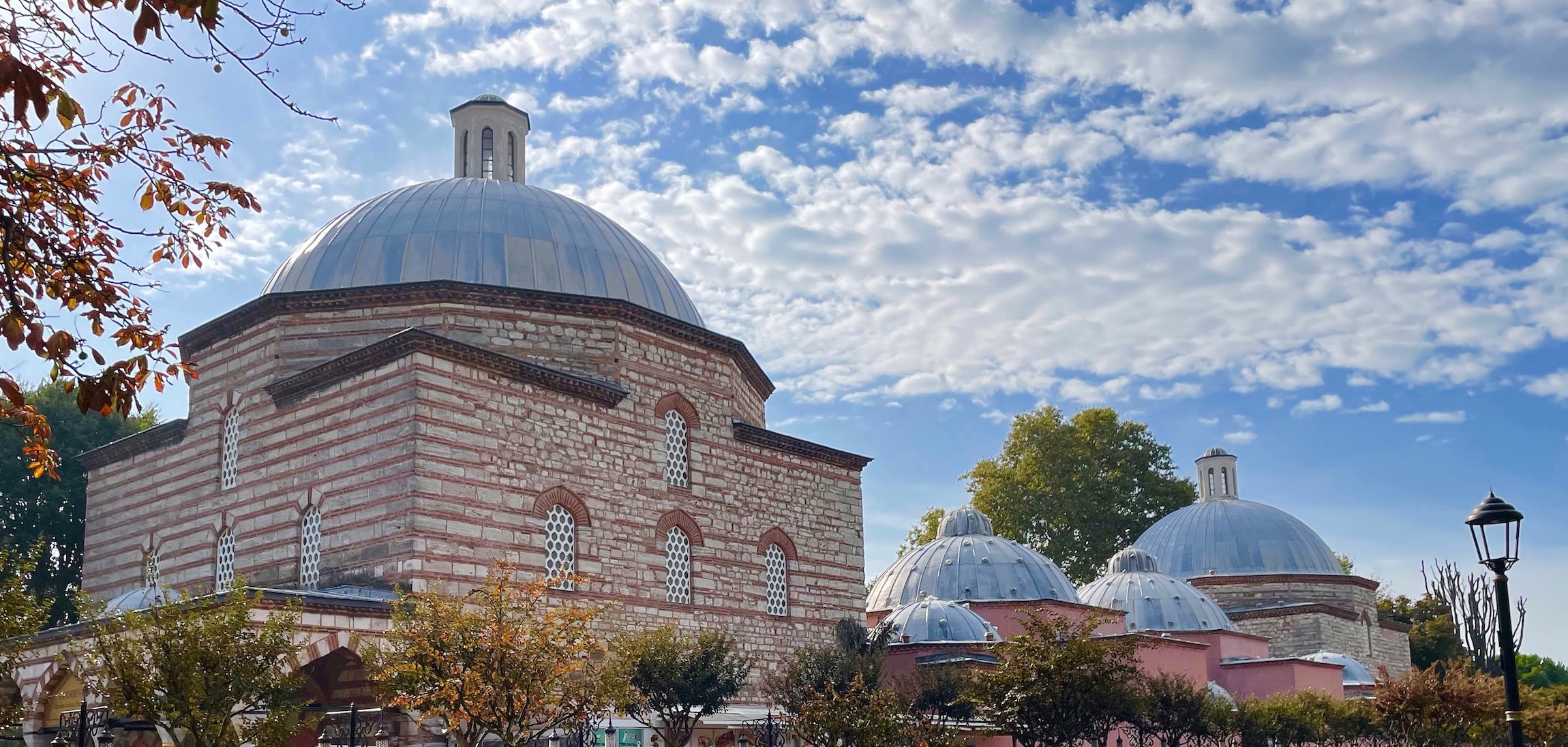
The baths were closed for over 100 years until restored and reopened in 2011. This is a great place to undergo the Turkish bath experience, but unlike the one I described in the post on the Sura Hagia Sophia Hotel, you cannot do this as a couple – there are separate men’s and women’s entrances and the two sexes do not mix once inside.
This is also a good place to get that once in a lifetime photo in front of the Hagia Sophia.
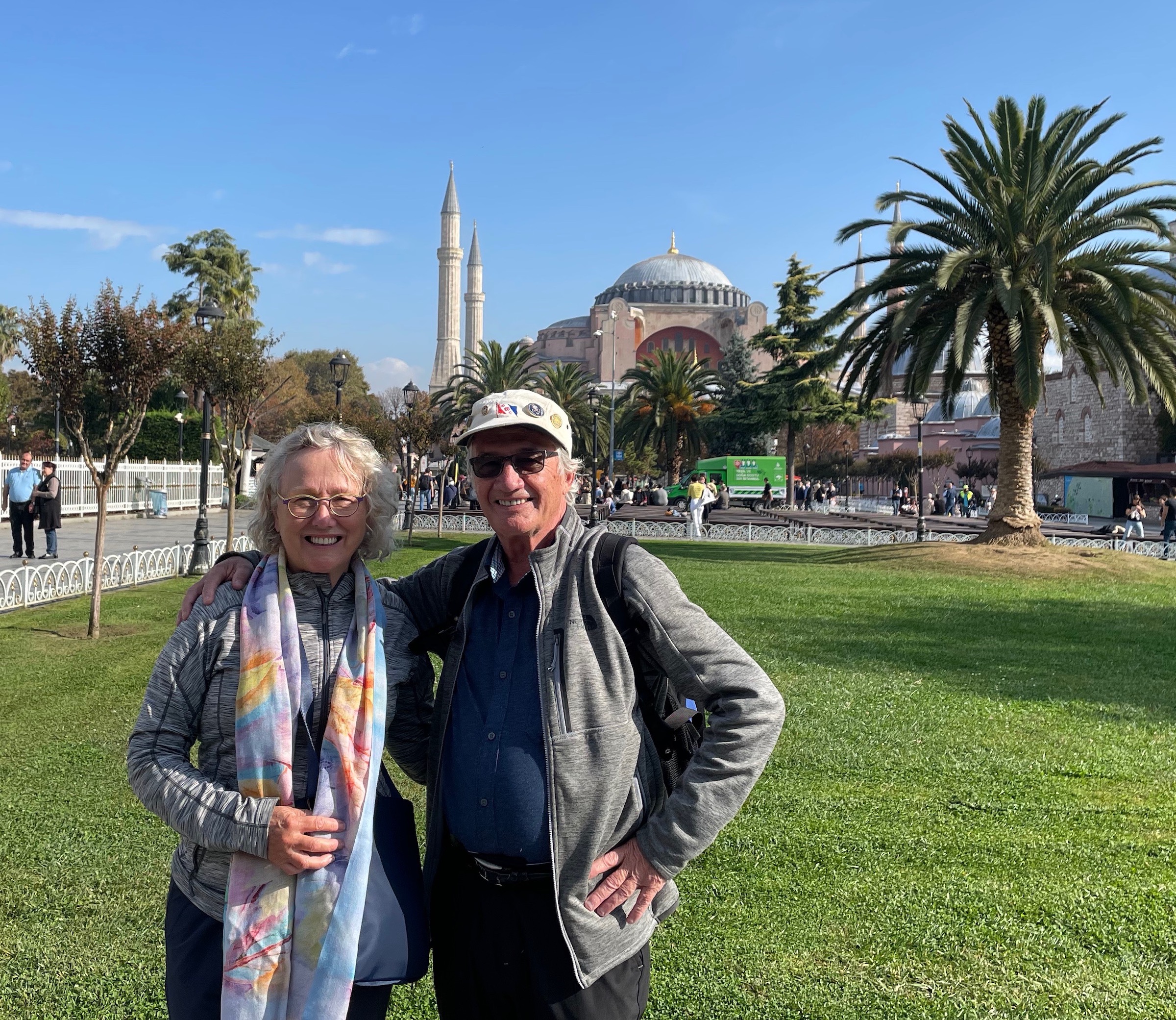
Hagia Sophia deserves a post of it’s own so we’ll resume our tour of the Sultanhamet there in our next stop on this Adventures Abroad tour. I hope you’ll join us.

